Great Astronomers by Robert Stawell Ball (uplifting novels .txt) 📕
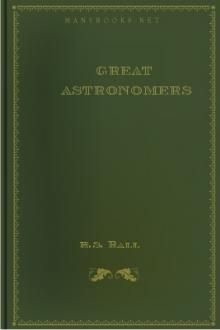
- Author: Robert Stawell Ball
- Performer: -
Book online «Great Astronomers by Robert Stawell Ball (uplifting novels .txt) 📕». Author Robert Stawell Ball
initially endowed with a movement of rotation, the central mass
into which it had chiefly condensed would also revolve, and the
subsidiary bodies would be animated by movements of revolution
around the central body. These movements would be all pursued in
one common direction, and it follows, from well-known mechanical
principles, that each of the subsidiary masses, besides
participating in the general revolution around the central body,
would also possess a rotation around its axis, which must likewise
be performed in the same direction. Around the subsidiary bodies
other objects still smaller would be formed, just as they
themselves were formed relatively to the great central mass.
As the ages sped by, and the heat of these bodies became
gradually dissipated, the various objects would coalesce,
first into molten liquid masses, and thence, at a further
stage of cooling, they would assume the appearance of solid
masses, thus producing the planetary bodies such as we now
know them. The great central mass, on account of its
preponderating dimensions, would still retain, for further
uncounted ages, a large quantity of its primeval heat, and
would thus display the splendours of a glowing sun. In this way
Laplace was able to account for the remarkable phenomena presented
in the movements of the bodies of the solar system. There are
many other points also in which the nebular theory is known
to tally with the facts of observation. In fact, each advance in
science only seems to make it more certain that the Nebular
Hypothesis substantially represents the way in which our solar
system has grown to its present form.
Not satisfied with a career which should be merely scientific,
Laplace sought to connect himself with public affairs. Napoleon
appreciated his genius, and desired to enlist him in the service
of the State. Accordingly he appointed Laplace to be Minister of
the Interior. The experiment was not successful, for he was not
by nature a statesman. Napoleon was much disappointed at the
ineptitude which the great mathematician showed for official life,
and, in despair of Laplace’s capacity as an administrator,
declared that he carried the spirit of his infinitesimal
calculus into the management of business. Indeed, Laplace’s
political conduct hardly admits of much defence. While he
accepted the honours which Napoleon showered on him in the time of
his prosperity, he seems to have forgotten all this when Napoleon
could no longer render him service. Laplace was made a Marquis by
Louis XVIII., a rank which he transmitted to his son, who was
born in 1789. During the latter part of his life the philosopher
lived in a retired country place at Arcueile. Here he pursued his
studies, and by strict abstemiousness, preserved himself from many
of the infirmities of old age. He died on March the 5th, 1827,
in his seventy-eighth year, his last words being, “What we know is
but little, what we do not know is immense.”
BRINKLEY.
Provost Baldwin held absolute sway in the University of Dublin for
forty-one years. His memory is well preserved there. The Bursar
still dispenses the satisfactory revenues which Baldwin left to
the College. None of us ever can forget the marble angels round
the figure of the dying Provost on which we used to gaze during
the pangs of the Examination Hall.
Baldwin died in 1785, and was succeeded by Francis Andrews, a
Fellow of seventeen years’ standing. As to the scholastic
acquirements of Andrews, all I can find is a statement that he was
complimented by the polite Professors of Padua on the elegance and
purity with which he discoursed to them in Latin. Andrews was
also reputed to be a skilful lawyer. He was certainly a Privy
Councillor and a prominent member of the Irish House of Commons,
and his social qualities were excellent. Perhaps it was Baldwin’s
example that stimulated a desire in Andrews to become a
benefactor to his college. He accordingly bequeathed a sum of
3,000 pounds and an annual income of 250 pounds wherewith to build
and endow an astronomical Observatory in the University. The
figures just stated ought to be qualified by the words of cautious
Ussher (afterwards the first Professor of Astronomy), that “this
money was to arise from an accumulation of a part of his property,
to commence upon a particular contingency happening to his
family.” The astronomical endowment was soon in jeopardy by
litigation. Andrews thought he had provided for his relations by
leaving to them certain leasehold interests connected with the
Provost’s estate. The law courts, however, held that these
interests were not at the disposal of the testator, and handed
them over to Hely Hutchinson, the next Provost. The disappointed
relations then petitioned the Irish Parliament to redress this
grievance by transferring to them the moneys designed by Andrews
for the Observatory. It would not be right, they contended, that
the kindly intentions of the late Provost towards his kindred
should be frustrated for the sake of maintaining what they
described as “a purely ornamental institution.” The authorities
of the College protested against this claim. Counsel were heard,
and a Committee of the House made a report declaring the situation
of the relations to be a hard one. Accordingly, a compromise was
made, and the dispute terminated.
The selection of a site for the new astronomical Observatory was
made by the Board of Trinity College. The beautiful neighbourhood
of Dublin offered a choice of excellent localities. On the north
side of the Liffey an Observatory could have been admirably
placed, either on the remarkable promontory of Howth or on the
elevation of which Dunsink is the summit. On the south side of
Dublin there are several eminences that would have been suitable:
the breezy heaths at Foxrock combine all necessary conditions; the
obelisk hill at Killiney would have given one of the most
picturesque sites for an Observatory in the world; while near
Delgany two or three other good situations could be mentioned.
But the Board of those pre-railway days was naturally guided by
the question of proximity. Dunsink was accordingly chosen as the
most suitable site within the distance of a reasonable walk from
Trinity College.
The northern boundary of the Phoenix Park approaches the little
river Tolka, which winds through a succession of delightful bits
of sylvan scenery, such as may be found in the wide demesne of
Abbotstown and the classic shades of Glasnevin. From the
banks of the Tolka, on the opposite side of the park, the pastures
ascend in a gentle slope to culminate at Dunsink, where at a
distance of half a mile from the stream, of four miles from
Dublin, and at a height of 300 feet above the sea, now stands the
Observatory. From the commanding position of Dunsink a
magnificent view is obtained. To the east the sea is visible,
while the southern prospect over the valley of the Liffey is
bounded by a range of hills and mountains extending from Killiney
to Bray Head, thence to the little Sugar Loaf, the Two Rock and
the Three Rock Mountains, over the flank of which the summit of
the Great Sugar Loaf is just perceptible. Directly in front opens
the fine valley of Glenasmole, with Kippure Mountain, while the
range can be followed to its western extremity at Lyons. The
climate of Dunsink is well suited for astronomical observation.
No doubt here, as elsewhere in Ireland, clouds are abundant, but
mists or haze are comparatively unusual, and fogs are almost
unknown.
The legal formalities to be observed in assuming occupation
exacted a delay of many months; accordingly, it was not until the
10th December, 1782, that a contract could be made with Mr. Graham
Moyers for the erection of a meridian-room and a dome for an
equatorial, in conjunction with a becoming residence for the
astronomer. Before the work was commenced at Dunsink, the Board
thought it expedient to appoint the first Professor of Astronomy.
They met for this purpose on the 22nd January, 1783, and chose the
Rev. Henry Ussher, a Senior Fellow of Trinity College, Dublin.
The wisdom of the appointment was immediately shown by the
assiduity with which Ussher engaged in founding the observatory.
In three years he had erected the buildings and equipped them with
instruments, several of which were of his own invention. On the
19th of February, 1785, a special grant of 200 pounds was made by
the Board to Dr. Ussher as some recompense for his labours. It
happened that the observatory was not the only scientific
institution which came into being in Ireland at this period; the
newly-kindled ardour for the pursuit of knowledge led, at the same
time, to the foundation of the Royal Irish Academy. By a fitting
coincidence, the first memoir published in the “Transactions Of The
Royal Irish Academy,” was by the first Andrews, Professor of
Astronomy. It was read on the 13th of June, 1785, and bore the
title, “Account of the Observatory belonging to Trinity College,”
by the Rev. H. Ussher, D.D., M.R.I.A., F.R.S. This communication
shows the extensive design that had been originally intended for
Dunsink, only a part of which was, however, carried out. For
instance, two long corridors, running north and south from the
central edifice, which are figured in the paper, never developed
into bricks and mortar. We are not told why the original scheme
had to be contracted; but perhaps the reason may be not
unconnected with a remark of Ussher’s, that the College had
already advanced from its own funds a sum considerably exceeding
the original bequest. The picture of the building shows also the
dome for the South equatorial, which was erected many years later.
Ussher died in 1790. During his brief career at the observatory,
he observed eclipses, and is stated to have done other scientific
work. The minutes of the Board declare that the infant
institution had already obtained celebrity by his labours, and
they urge the claims of his widow to a pension, on the ground that
the disease from which he died had been contracted by his nightly
vigils. The Board also promised a grant of fifty guineas as a
help to bring out Dr. Ussher’s sermons. They advanced twenty
guineas to his widow towards the publication of his astronomical
papers. They ordered his bust to be executed for the observatory,
and offered “The Death of Ussher” as the subject of a prize essay;
but, so far as I can find, neither the sermons nor the papers,
neither the bust nor the prize essay, ever came into being.
There was keen competition for the chair of Astronomy which the
death of Ussher vacated. The two candidates were Rev. John
Brinkley, of Caius College, Cambridge, a Senior Wrangler (born at
Woodbridge, Suffolk, in 1763), and Mr. Stack, Fellow of Trinity
College, Dublin, and author of a book on Optics. A majority of
the Board at first supported Stack, while Provost Hely Hutchinson
and one or two others supported Brinkley. In those days the
Provost had a veto at elections, so that ultimately Stack was
withdrawn and Brinkley was elected. This took place on the 11th
December, 1790. The national press of the day commented on the
preference shown to the young Englishman, Brinkley, over his Irish
rival. An animated controversy ensued. The Provost himself
condescended to enter the lists and to vindicate his policy by a
long letter in the “Public Register” or “Freeman’s Journal,” of
21st December, 1790. This letter was anonymous, but its
authorship is obvious. It gives the correspondence with Maskelyne
and other eminent astronomers, whose advice and guidance had been
sought by the Provost. It also contends that “the transactions of
the Board ought not to be canvassed in the newspapers.” For this
reference, as well as for much other information, I am indebted
to my friend, the Rev. John Stubbs, D.D.
[PLATE: THE OBSERVATORY, DUNSINK.
From a Photograph by W. Lawrence,
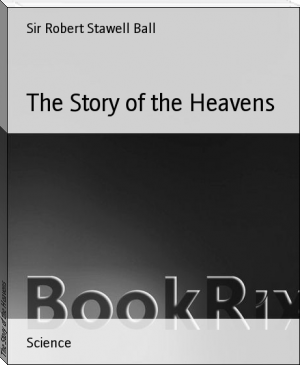
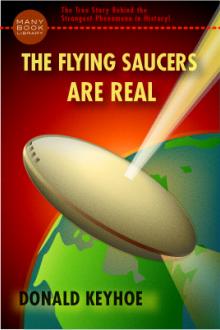

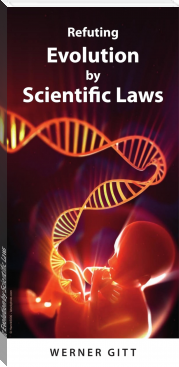
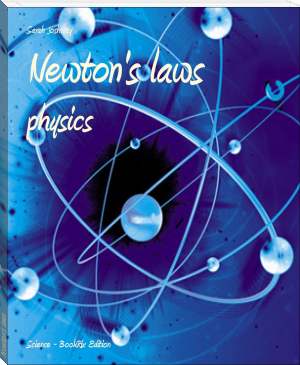
Comments (0)